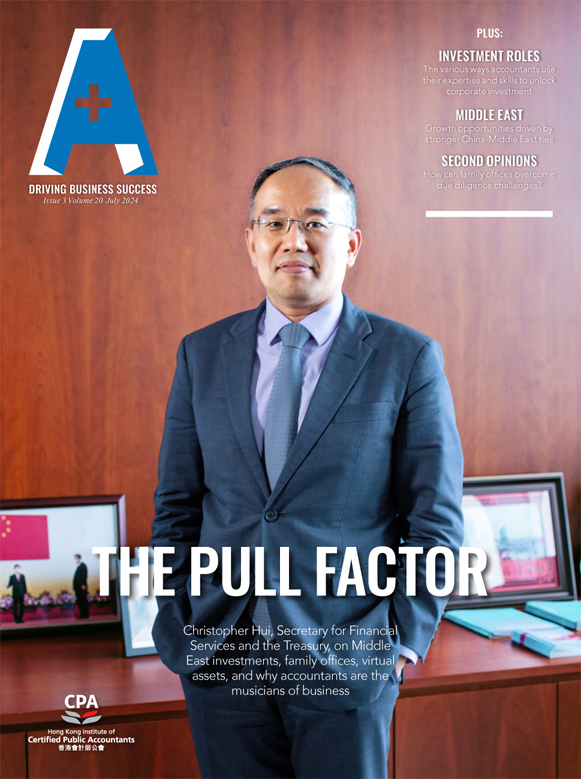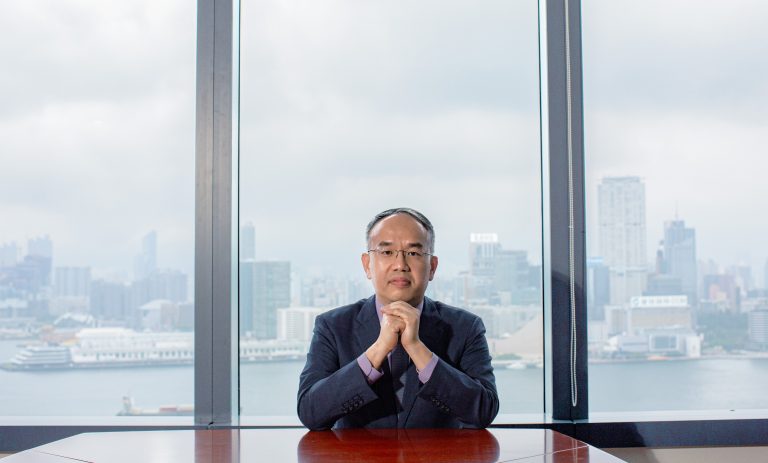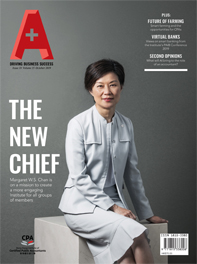It’s a late weekday afternoon, and Albert Wong has just arrived at the Craigengower Cricket Club in Causeway Bay for a round of tennis with his friends. With his racket at the ready, he takes time to stretch before launching the tennis ball high in the air and hitting it with a rigorous swing. He shows no signs of fatigue, and continues to practice for the next few hours – even though the 62-year-old played golf with another group of friends earlier that day.
Since retiring in 2017, physical activity plays a larger role in Wong’s life, especially after a frightening incident a decade before. “Due to pressure at work, I remember almost collapsing,” he says. “I was regularly working 14-hour days and all my time and energy went to work.” Wong luckily regained consciousness. Unsure of what really led to the collapse, it was a wake up call for Wong, who was 50 at the time. He decided to start doing more physical activity, and saw how it made him stronger and helped him cope with stress during the years leading up to his retirement, and the years after.
More retirees like Wong recognize the importance of a healthy retirement and are incorporating more physical activity into their daily routines. Indeed, a 2019 Journal of the American Medical Association study found that physical activity increases the odds of having a healthy aging process by up to 36 percent. The study also found that individuals benefited from exercise, even if they began later in life.
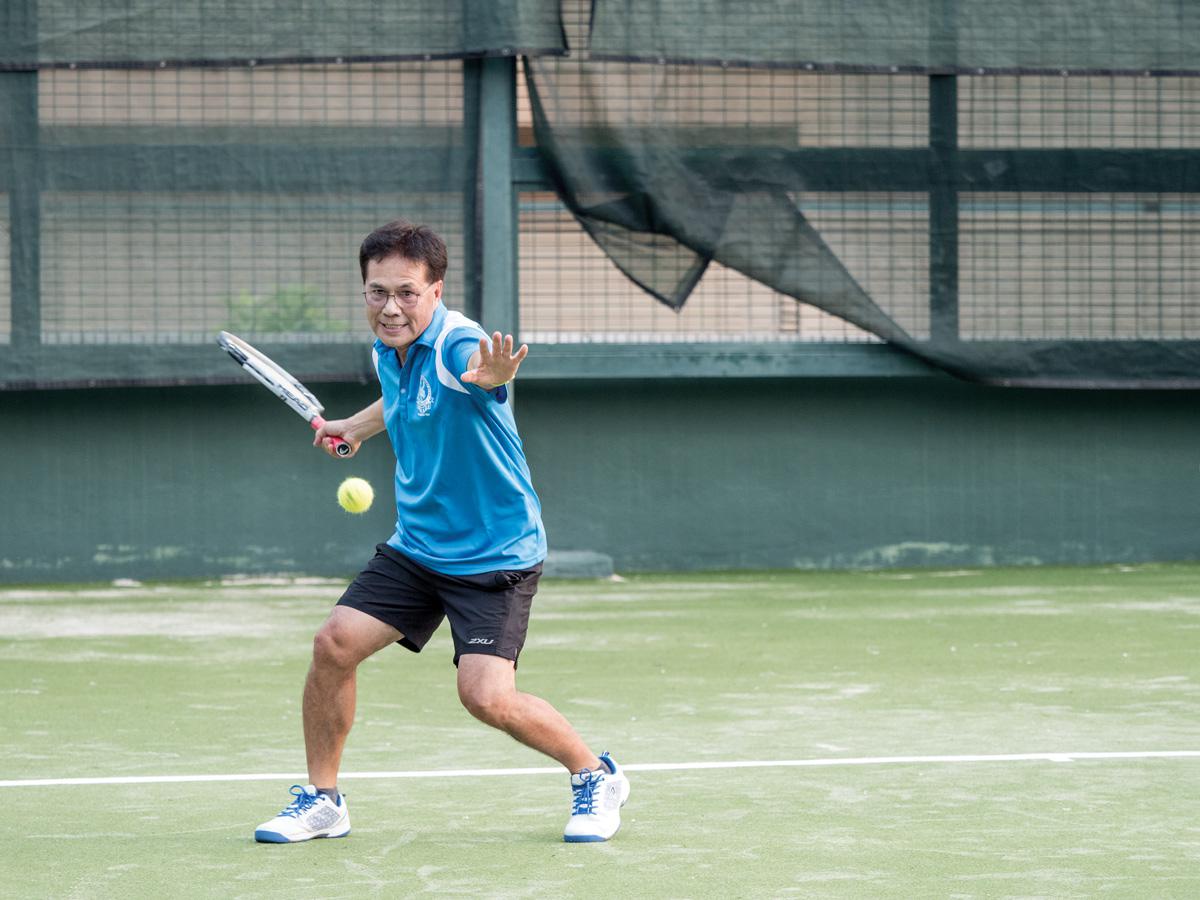 Albert Wong keeps fit by playing tennis. Here, he is practicing at the Craigengower Cricket Club in Causeway Bay.
Albert Wong keeps fit by playing tennis. Here, he is practicing at the Craigengower Cricket Club in Causeway Bay.
Wong spent more than 30 years working at the Audit Commission of the Hong Kong government. His last role as assistant director involved performing value for money audits and compiling performance audits on 60 government departments.
He graduated from the City University of London in 1982 with a degree in economics and accounting. He first worked at KPMG as a trainee accountant for two years and then worked at the Treasury of the Hong Kong government as an accounting officer of the internal audit department for a year. He then joined the Audit Commission in 1985 as an auditor, attained his Institute qualification in 1988, and embarked on a 12-month work secondment at the National Audit Office in London. “Going from working at the Treasury to working at the Audit Commission was a big jump, at least for me,” Wong says. “During the secondment, I learned how to perform value for money audits and brought that experience back with me to Hong Kong.” He worked his way up the ranks from senior auditor to principal auditor before being promoted to assistant director in 2010. “It’s a very important role, as it ensures public funds are spent wisely and correctly,” he says.
As Wong remembers, the most demanding times involved preparing audit reports, which would then be submitted to Hong Kong’s Legislative Council twice a year. “We had to submit these reports before the end of every April and October, and not a day late,” he says. “I had to make sure each report was factually correct, constructive and balanced.” The pressure took a toll on Wong, who wanted to exercise, but couldn’t find time. “I was quite unhealthy and wasn’t very active for most of my working life – from age 25 to 50. After that incident, and having a colleague and friend pass away due to work pressure, I knew I needed to spend more on activities than just work,” he says.
He began playing golf and tennis and attended running, hiking and cycling events organized by the Institute’s interest groups. Wong quickly looked and felt noticeably healthier and saw how it positively impacted his work too. He began training on the weekends, and soon began completing full marathons. His also cycled the 1,000-km bicycle route around Taiwan in 2012.
Wong now dedicates his time to fitness and travelling with his wife. He has plans to travel to northern China with his family at the end of the year.
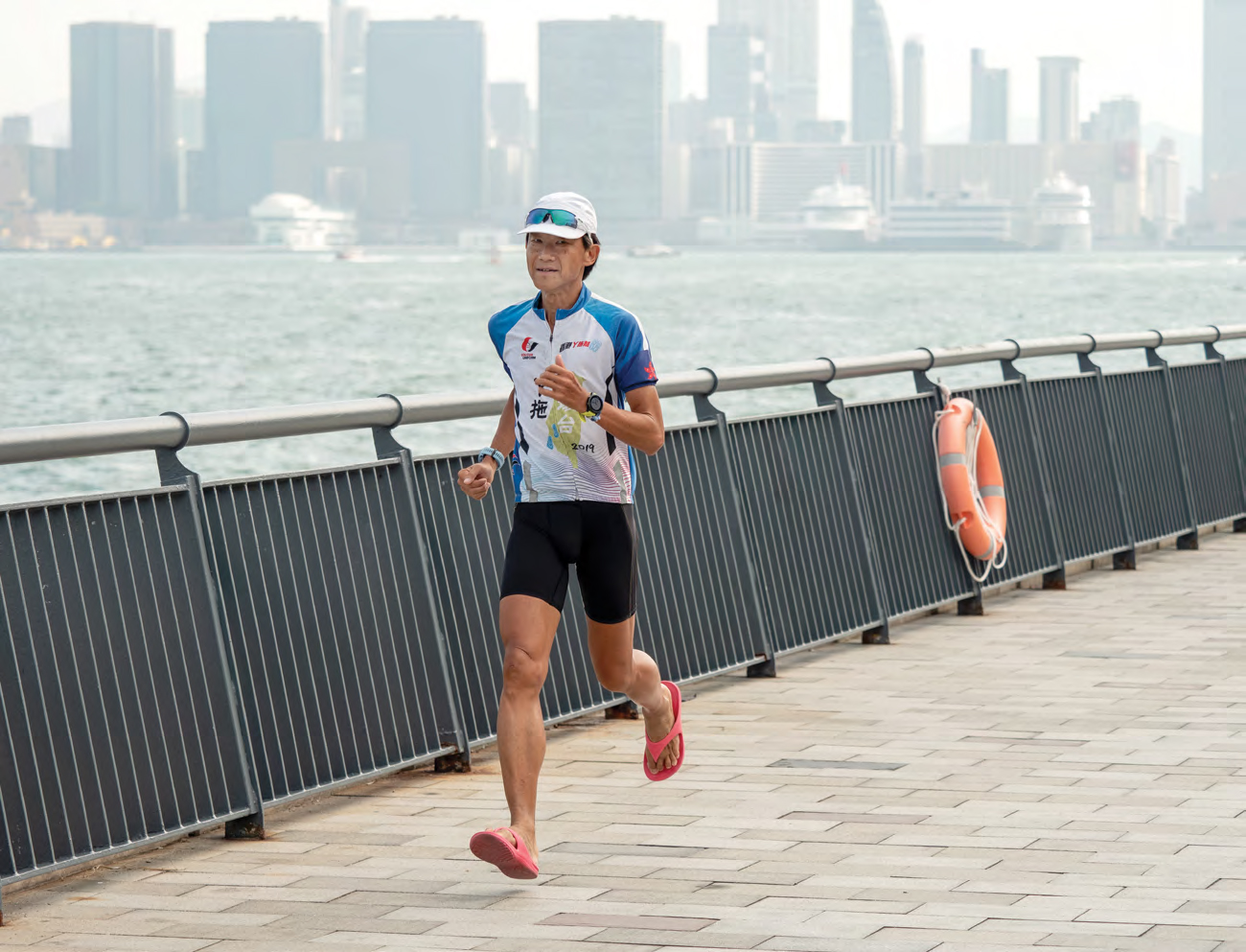 Jeremy Chiu has been an active runner for almost 20 years, and goes for a run at least once a day.
Jeremy Chiu has been an active runner for almost 20 years, and goes for a run at least once a day.
Running for his life
For Jeremy Chiu, retirement allowed him to go further with his passion for long-distance running. In April, the retiree embarked on an adventure he had been dreaming of for years. “I managed to run around Taiwan,” Chiu says. “It’s Taiwan’s most famous biking trail and over a thousand kilometres long.”
Chiu has been an active runner for almost two decades. Though he played sports such as football and badminton in his younger years, a serious knee injury in 1997 during a badminton game meant he had to take a long break. Unable to completely bend his legs, Chiu still remembers struggling to even make it down a flight of stairs. “I remember sitting at my desk all day at work just to avoid moving my legs,” he says. “I consulted a bone doctor, but even that didn’t work.” He stopped doing sports altogether for three years. Fed up with being sedentary and eager to move again, he decided to fight the pain and jog around his neighbourhood one day.
“I started very slowly,” he says. “Though my knee still hurt during and after the run, it actually hurt a lot less than when I’d sit down all day.” Able to only run around 400 metres at first, he doubled the distance every week, and after two years, he was able to run 10 km. The more Chiu ran, the stronger his legs became and the less his knee would hurt. After participating in short marathons, he took part in the Hong Kong Marathon and finished the full distance of 42 km in 2006.
“I remember sitting at my desk all day at work just to avoid moving my legs.”
For the years after, it was a delicate balance between working and running. He began his career at Nanyang Commercial Bank as an accountant and then became an asset liability manager. After 15 years, he went on to work at Bank of China and then the Bank of Communications, where he retired from in April 2018. In the years leading up to his retirement, a friend had been asking Chiu to join him in a run around Taiwan but he turned it down, unable to take an extended period of leave. After hearing his friend and a few others would undertake the harrowing run again this year, he jumped at the opportunity.
Lugging a light backpack with essentials such as water, clothes and first aid, Chiu and a team of four others began by running 45-55 km a day, stopping only to rest, stock up on food, fluids and to take in the views. “We’d see large stretches of green rice fields, mountains and the sea,” Chiu remembers. “As tired as I was, just knowing I was about to see a beautiful sunset kept me going.”
Instead of running shoes, Chiu and his team ran in special, well-cushioned slippers during the entire expedition. “They’re breathable and don’t restrict your feet and toes,” he says. “In a way, these pink slippers helped me to complete the 1,000-kilometre run.” The team designated hotels as checkpoints, where they would end at five o’clock every evening. Chiu completed the run in 22 days and says it was the most challenging, yet greatest run of his life.
Retirement has also allowed Chiu to travel. He is now planning to travel to the United States to fulfill his dream of running the Boston Marathon in April 2020. “Though I can’t go back to playing the sports I used to play, I believe running will keep me healthy, hopefully for the rest of my life,” Chiu says. “As long as I can move, I’ll keep running.”
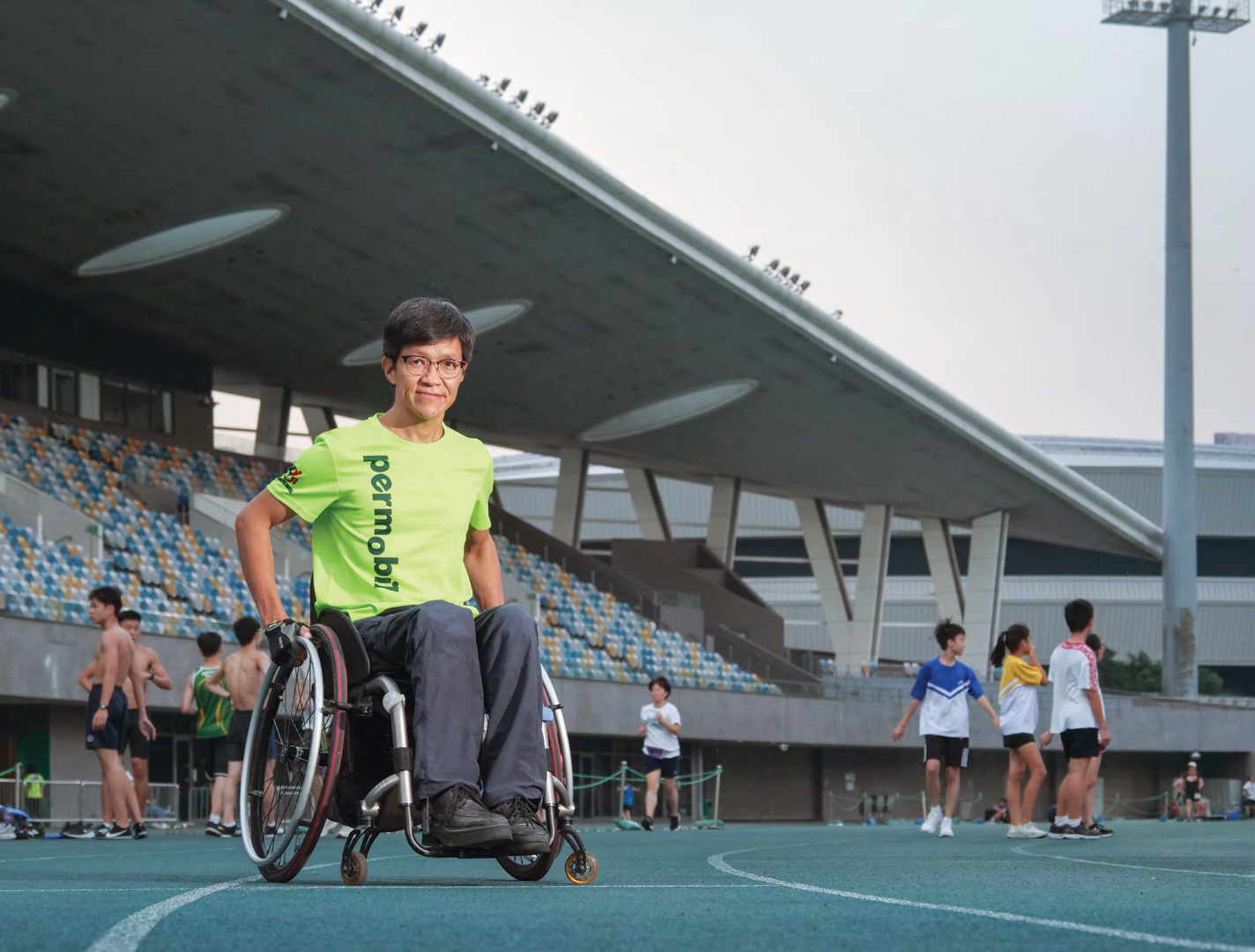 William Chu practices wheelchair racing at the Tseung Kwan O Sports Ground every Friday evening.
William Chu practices wheelchair racing at the Tseung Kwan O Sports Ground every Friday evening.
Feeling unstoppable
William Chu is a wheelchair racer and member of the Hong Kong Federation of Handicapped Youth’s Rehabilitative Affairs Sub-Committee. “One of our aims is to encourage wheelchair users to do exercise using their wheelchairs,” he says. “We also promote wheelchair basketball and tennis.” Since retiring in 2017, the Accountant Ambassador has been focused on staying healthy and giving back.
As part of the sub-committee, Chu also attends and hosts consultations. The goal, he says, is to help improve the welfare of the disabled in Hong Kong. “We provide advice to policymakers in the Hong Kong, who will soon introduce a 10-year rehabilitation policy from 2020-2030,” he says. “For example, it’s very difficult for bus drivers to notice a wheelchair user at a crowded bus stop – not many people stop to think about that.”
Chu, who has suffered from poliomyelitis since age three, only began using a wheelchair in his 40s after he started experiencing issues in his knees. “The doctor recommended I use a wheelchair for long journeys and crutches for short ones. But I don’t think being in a wheelchair has been much of a problem in life,” says Chu, who is happily married and has children. Eager to make the most of his condition, he went from using a regular wheelchair to a lighter and more durable sports wheelchair, and began racing in 2012.
“It’s almost like travelling on a bicycle. And I love the feeling of speed.”
“I started doing it for my health. I wanted to build as much strength as I could, while I could,” he adds. With a pair of gloves, he trained on a biking path in the New Territories and began pushing himself short distances of 3 to 5 km and was soon able to travel up to 10 km. Other cyclists, Chu remembers, were pleasantly surprised to see a wheelchair user training on the path. “Some of them gave me thumbs up or sent words of encouragement as they passed by,” he says. As a result, Chu lost some weight and his arms became more defined. It wasn’t long before he took on his first half marathon. “I recently completed a 21-km half marathon in Beijing in an hour and 57 minutes,” he says. The feeling of racing on a sports wheelchair, he adds, is like no other. “It’s almost like travelling on a bicycle,” he says. “And I love the feeling of speed.”
After graduating from Hong Kong Polytechnic University with a degree in management accounting, Chu began his career at food company Amoy and then went on to work at industrial and automotive lubricant group Castrol for two years. He spent another two years at Hong Kong Telecom, a year at the Community Chest, and then joined electric company CLP, where he spent 25 years, and the last year as finance director of a joint venture between CLP and Hong Kong Telecom.
Since retirement, Chu has also been able to travel more. “Though I’m in a wheelchair, I’ve travelled a lot and been to places like Switzerland, Belgium, The Netherlands, Japan, Thailand, China – I love exploring new places on a wheelchair.” He is also learning the guitar and studying Japanese, and will sit an examination in December. Chu is also training hard for his first full marathon, taking place in Dongguan that same month.
Using his own experience, Chu is wholeheartedly dedicated to transforming the lives of other wheelchair users and wants them to know that it isn’t too late to start exercising. “We want them to know that exercise, especially wheelchair racing, is physically and mentally beneficial and will increase their confidence,” he says. “A wheelchair should not just be seen as a tool to recover from an injury or sickness. A wheelchair can become your pair of legs, ones which you can use to travel the world.”
For a healthier life and decreased risk of disease, the Hong Kong Department of Health recommends at least 30 minutes of exercise at least five times a week. Regular physical activity improves heart function, helps to maintains an optimum body weight, reduces stress and promotes psychological well-being.
